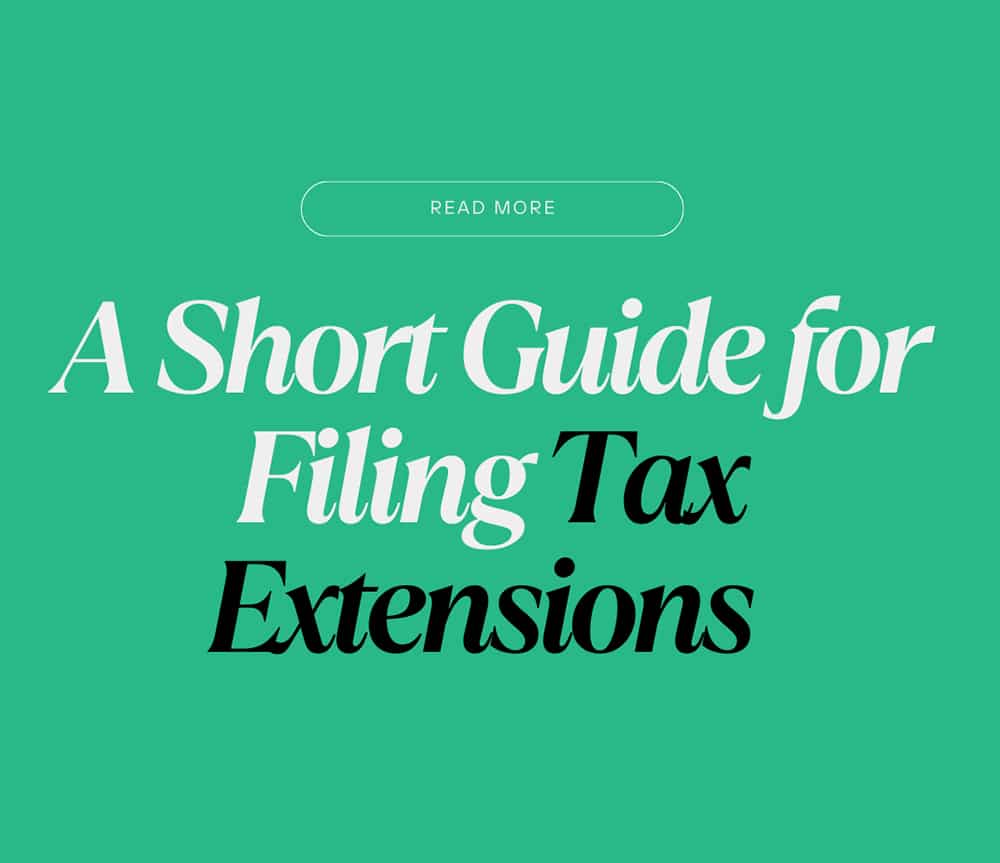
A Short Guide for Filing Tax Extensions
We all know that sinking feeling when April 15th gets closer, but your tax documents are still a scattered mess. Yet, requesting an extension is super easy and gives you more time to get your tax report together.
Let me walk you through everything you need to know about getting a tax filing extension.
Who Can File for an Extension?
Great news – filing for an extension is open to pretty much everyone. As long as you submit the extension request by the tax deadline (usually April 15th), you automatically qualify for more time. The IRS isn’t picky about who can get an extension.
The only taxpayers who get an automatic extension without requesting one are those living abroad or serving in the military overseas on April 15th. But besides those special cases, all you need to do is file for an extension by the deadline, and you’re good to go.
Key Takeaway: Filing for a tax extension is easy and available to almost all taxpayers simply by requesting it by April 15th.
How to File for a Tax Extension
Requesting an extension is super simple – you just need to fill out IRS Form 4868 by the tax deadline. You can do this electronically or by paper mail.
To file electronically, use the IRS Free File site and choose one of their free tax prep products. Complete Form 4868 through their interview questions, submit your extension request, and you’re done!
If you prefer paper mail, just download Form 4868 from the IRS website, fill it out with your info and mail it to the IRS address for your state. As long as it’s postmarked by April 15th, you’re golden.
Either way, try to estimate your tax payment for the year and pay any expected amount due when you submit your extension request. The extension gives you more time to file, but you must pay on time.
Key Takeaway: Getting an extension is as easy as filling out Form 4868 electronically or through the mail by April 15th. Don’t forget to pay estimated taxes owed!
Important Deadlines to Remember
To keep things simple, here are the key dates to remember:
- April 15th – The regular deadline to file your tax return and pay any taxes owed. This is also the deadline to request a filing extension if you need one.
- October 15th – If you file for an extension by April 15th, your new deadline to submit your return is October 15th. Mark those calendars!
- No change to paying taxes – An extension gives you more time to file, but you STILL need to pay your expected taxes due by April 15th. I know, I sound like a broken record. But this is really important!
- 6 month extension – Getting an extension through Form 4868 buys you an extra 6 months to file. You can request longer, but need a good reason.
Key Takeaway: File the extension by April 15th to get until October 15th for submitting your return. Pay estimated taxes owed by April 15th too!
Paying Taxes Owed
When filing for extension, make sure to estimate your tax bill using your prior year’s return or withholding info. Pay that estimated amount by April 15th to avoid late fees. The IRS offers plenty of payment options through their site or you can just mail a check with your extension form.
The key is paying something, even if it’s an estimate. Saving your full payment for the October deadline with an extension is a recipe for penalties. We want to avoid those if possible.
Key Takeaway: An extension gives you more time to file, but you still must estimate and pay taxes owed by April 15th to avoid penalties. Don’t delay payment.
Read More: Pros and Cons of Taking a Personal Loak to Pay Tax Debt
What Happens Next?
Once you’ve filed for that beautiful tax extension, here are some tips for what to do next:
- Store a copy of your extension with your other tax documents so you have the records.
- Go ahead and start working on your tax return now in smaller chunks; don’t wait!
- Put reminders on your calendar for October 15th as your new deadline.
- Double and triple-check your return for errors before you file it by the new deadline. The last thing you want is an processing delay eating up your refund.
- Check online using the IRS tool to make sure your extension was received and approved.
Doing these small tasks now will save you from last-minute headaches later on.
Key Takeaway: Save confirmation of your extension, begin your taxes early, set reminders, and verify the IRS got your request to stay ahead of the game.
Common Myths and Misconceptions
Won’t I get audited if I file for extension? This is a big myth – filing for a tax extension does NOT increase your risk of getting audited by the scary IRS.
We used to worry about this, too, but the IRS itself says an extension alone won’t lead to any additional audit scrutiny.
Some other common myths are that you need a specific reason to get an extension or that October 15th is the only option for your new deadline.
The truth is, as long as you file Form 4868 properly and estimate your taxes, an extension is easy and penalty-free.
Key Takeaway: False myths say extensions increase audit risk or don’t allow deadline flexibility. Know the facts to avoid freaking out!
Final Thoughts
Here are the key points to take with you:
- Filing for an extension is open to almost all taxpayers simply by submitting Form 4868 to the IRS by April 15th.
- An extension gives you more time to file your return, but your tax payment is still due on April 15th. Mark those calendars and estimate what you’ll owe.
- Follow up on your extension, begin working on your taxes early, and verify that the IRS received your request. This avoids any last-minute crises.
- Don’t buy into myths about extensions being complicated or flags for audits.






Sorry, the comment form is closed at this time.